Приложение
Как установить приложение на iOS
Смотрите видео ниже, чтобы узнать, как установить наш сайт в качестве веб-приложения на домашнем экране.
Примечание: This feature may not be available in some browsers.
Вы используете устаревший браузер. Этот и другие сайты могут отображаться в нём некорректно.
Вам необходимо обновить браузер или попробовать использовать другой.
Вам необходимо обновить браузер или попробовать использовать другой.
Здоровье / Внешний вид [Татьяна Сахарчук] Расслабление. Мотивация: целеполагание, переживание неудач (2024)
- Пользователь tttx
- Дата Здоровье / Внешний вид / Питание
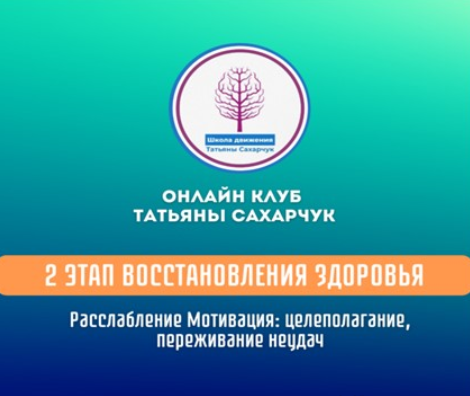
ОПИСАНИЕ:
2 этап восстановления здоровья. Расслабление. Мотивация: целеполагание, переживание неудач [Татьяна Сахарчук]
А вы знали, что большая часть нейронов головного мозга человека участвует в обеспечении наших движений?
Благодаря знаниям из прикладной кинезиологии мы в каждом нашем уроке, соединяем части нашего тело в одну целостную систему.
Запуская каскад реакций, направленных на с самовосстановление и саморегуляцию собственной нервной системы, а значит и всего тела целиком.
В таком подходе нет ограничений, ведь каждое движение выполняется в зоне комфорта, что позволяет запустить механизмы переобучения и включить больше нейронных сетей в...
Здоровье / Внешний вид [Пйотр Костшебски] Глобальная терапия стопы (2021)
- Пользователь tttx
- Дата Здоровье / Внешний вид / Питание

ОПИСАНИЕ:
ПРОГРАММА
1. Вступление в эмбриологию опорно-двигательного аппарата и эмбриологического развития нижней конечности. Эмбриология нижней конечности.
2. Онтогенез человека от рождения до поздней старости с точки зрения стопы.
3. Нейромоторное развитие стопы одинакового развития ребенка (новорожденного, младенца) - нужны ли знания в этой области физиотерапевту и как это перенести на практику?
4. Биомеханика и патобиомеханика стопы. Биомеханика щели Choparta со связками, относительно повреждений и спиральной биомеханики.
5. Биомеханика щели Lisfranca со связками, относительно повреждений и спиральной биомеханики.
6. Пальпационная анатомия...
Здоровье / Внешний вид [Павел Тулюпа] Fithub. Комфортный путь к стройности (2024)
- Пользователь tttx
- Дата Здоровье / Внешний вид / Питание

ОПИСАНИЕ:
Избавься от свисающих боков и лишнего жира за 4 недели благодаря эффективной системе питания
По итогу курса ты научишься:
- Cоставлять сбалансированную программу питания
- Разберешься в основах питания
- Сформируешь привычки, которые помогут сохранить результат
- Избавишься от лишнего жира и целюлита
- Игровой формат
- Вы незаметно для себя сформируете новые привычки
- Легче получите результат
- Будет интересней проходить обучение
- Будет лучше усваиваться информация
- Как мы будем сжигать жир эффективно
- Важные привычки...
Здоровье / Внешний вид [Гузель Евстигнеева] Вся правда о холестерине (2024)
- Пользователь tttx
- Дата Здоровье / Внешний вид / Питание

ОПИСАНИЕ:
Гастроэнтеролог, диетолог, врач превентивной медицины, кандидат медицинских наук Евстигнеева Гузель
Узнаете причины повышения холестерина, нужно ли его снижать и как делать это правильно
- узнать причины повышения холестерина
- снизить холестерин БЕЗ статинов
- определить свой риск инфаркта и инсульта
- узнать, как питаться, чтобы снизить холестерин
- узнать, когда именно вам пора пить статины (или достаточно БАДов и питания)
- Не имеете медицинского образования, но хотите помочь себе и своим близким
- Врач, health-коуч, нутрициолог и хотите повысить свои компетенции
- ...
Здоровье / Внешний вид [Елизавета Зуйкова] Мало ем и не худею. Причины низкого расхода калорий. И как стройнеть даже на 2000 калорий (2024)
- Пользователь tttx
- Дата Здоровье / Внешний вид / Питание

ОПИСАНИЕ:
Liza Modelfit
О тренировках для девушек с хорошим вкусом.
Об авторе:
Привет, меня зовут Лиза! 5 лет я занималась моделингом. По мере съемок меня затягивал спорт и желание выглядеть именно подтянуто- стройно, с ювелирно проработанным мышцами, без фанатизма и перекачанности.
В моих видео вы узнаете как тренироваться, чтобы иметь упругое тело, с объемами в нужных местах.
А также, как уравновесить пропорции разным типам фигур.
И главное, как тренироваться астеническим (худощавым) от природы девушкам, чтобы жить в упругом, а не костлявом теле
Подписка на канал на месяц
В подарок отправлю свой гайд с полезными десертами без сахара...
Здоровье / Внешний вид [Венера Хабирова] Кишечник – ты как? Запор, Диарея, СИБР, СРК (2024)
- Пользователь tttx
- Дата Здоровье / Внешний вид / Питание
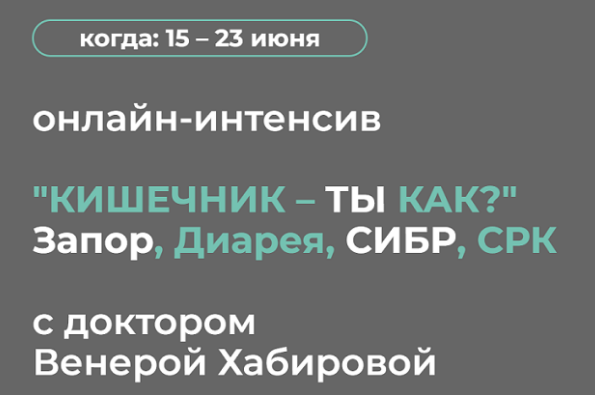
ОПИСАНИЕ:
Кишечник – ты как? Запор, Диарея, СИБР, СРК [Венера Хабирова]
Новая супер-практикоприменимая серия лекций по поддержке здоровья кишечника – более 8 часов!
Кого я жду в новом интенсиве:
Всех кто хочет понять, что такое нормальный стул:
- выяснить свои причины нарушения стула и что у меня в питании останавливает, а что двигает кишечник;
- изучить нюансы применения нутрицевтиков, незнание которых – снижает эффективность;
- узнать какие есть виды слабительных и как их применять, минимизируя побочки;
- уйти от слабительных;
- понять – почему делаешь для нормального стула много, а эффекта нет.
Здоровье / Внешний вид [Гюнэль Горчиева] Хореография под клубные ремиксы певицы Sandra. Тариф Самостоятельно (2024)
- Пользователь tttx
- Дата Здоровье / Внешний вид / Питание

ОПИСАНИЕ:
Хореография под клубные ремиксы певицы Sandra [тариф Самостоятельно] [Гюнэль Горчиева]
Вас ждут шикарные танцевальные связки под 2 ремикса хитов певицы Sandra:
Движения из этих связок вы сможете применить под любую другую музыку в будущем.
В процессе обучения вы полюбите свое тело заново и получите массу удовольствия, танцуя под эти драйвовые песни суперзвезды 80-х!
Связки, которые мы будем учить, очень полюбились моим ученицам с офлайн мастер-классов в Москве.
Ролики с ними набрали миллионы просмотров в моем Instagram!
Мы будем танцевать не только под треки Sandra, но и под другие ремиксы на хиты 80-х! Музыка той эпохи очень...
Здоровье / Внешний вид [Татьяна Курчина] Щёчки-яблочки (2024)
- Пользователь tttx
- Дата Здоровье / Внешний вид / Питание

ОПИСАНИЕ:
Щёчки-яблочки [Татьяна Курчина]
Будем тренировать яблочки и сделаем наши щёчки молодыми и красивыми. Вернем им прежний девичий объём.
Красивый овал, приятная улыбка, омоложение всего лица - вот что ждёт вас после этого интенсива.
Зачем нам работать с "яблочками":
Молодое лицо выглядит наполненным. Скулы ярко выделяются и выглядят как яблочки. Красивые, наполненные скулы удерживают овал лица на месте.
Так же удерживают круговую мышцу глаза и скуловую связку.
Это такой каркас лица, за счет поддержания объёма которого, лицо будет выглядеть молодым и свежим.
Щёчки нужно обязательно тренировать, чтобы сохранить красивую улыбку и...
Ораторское искусство [Ольга Грищенко] Гений общения (2024)
- Пользователь tttx
- Дата Ораторское искусство

ОПИСАНИЕ:
Курс Гений общения - это база, которая нужна каждому человеку для эффективной коммуникации с другими людьми
На курсе освоите 7 главных навыков эффективной коммуникации, которые помогут вам
- получить повышение и без страха просить подъема заработной платы
- производить впечатление и притягивать внимание
- выстраивать здоровое общение с близкими и коллегами
- стать увереннее и авторитетнее в глазах окружающих
- не бояться говорить о своих чувствах и переживаниях
- сделать первый шаг к построению своего дела
- находить общий язык с каждым: от руководителя-скептика до непослушного ребенка
Программа курса
Урок: 1
Как влюбить в себя...
Психотерапия [Женя Донова] Взрослое поведение (2023)
- Пользователь tttx
- Дата Психотерапия

ОПИСАНИЕ:
Программа:
Блок 1. Начать по-взрослому
1. Как построена работа на курсе.
2. Как учиться легко и эффективно.
3. Как правильно ставить цели на курс, чтобы прийти к желаемому.
4. Как преодолевать сопротивление.
5. Эффективная практика на работу с сопротивлением и страхами.
6. Практические упражнения.
Блок 2. Погружение в программу. Путь к сепарации, независимости и собственной взрослости
1. Погружение в программу курса. Что такое сепарация.
2. Нормы и этапы прохождения сепарации.
3. Как связаны созависимость в отношениях и непройденная сепарация.
4. Возможно ли дать ребенку всё.
5. Что может тормозить сепарацию и почему.
6...
Психотерапия [Детология] [Ирина Терентьева] Гаджетомания у детей (2024)
- Пользователь tttx
- Дата Психотерапия

ОПИСАНИЕ:
Зависимость от цифровых устройств: компьютеров, смартфонов, планшетов, телевизоров — это распространенная проблема в наше время среди детей раннего и младшего школьного возраста.
Все начинается с того, что вы даете ребенку телефон в руки, включаете игру или мультик, чтобы сделать какие-то свои важные дела.
Ребенок занят — ваши руки свободны. Это отлично работает, это удобно!
Потом вы делаете это еще, еще и еще раз…
А потом это уже просто становится нормой, превращается в привычку. Ребенка остается в компании с телефоном все дольше и дольше.
Проблема зависимости от гаджетов – одна из самых болезненных для родителей, и никто толком не...
Личностный рост [Григорий Зайцев] [Касталия] Футарк. Практические занятия. Лекция 10 (2024)
- Пользователь tttx
- Дата Саморазвитие / Психология / Эзотерика
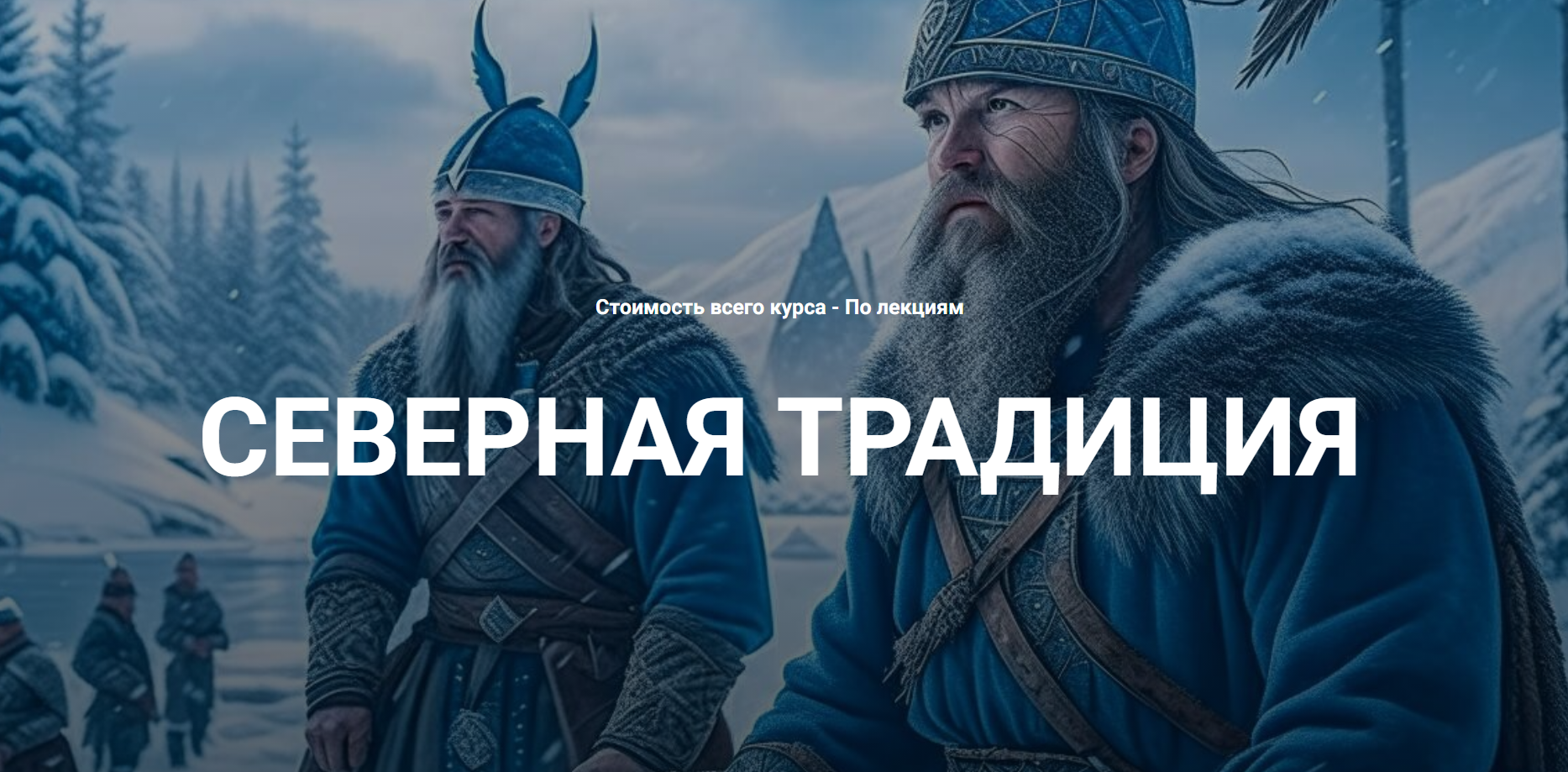
ОПИСАНИЕ:
Интеллектуальный клуб «Касталия»
Юнгианство. Оккультизм. Трансгрессия
"Касталия" - многомерный культурно-просветительский проект, целью которого является ментальное и духовное обогащение личности посредством синтеза самого широкого спектра знаний - от глубинной психологии до оккультных традиций - и от того не имеющий аналогов в информационном пространстве.
Закончился большой курс по Старшему Футарку и пришло время практических занятий.
Первое занятие состоится 5 апреля в 19.00
Ведущий: Григорий Зайцев
Маг, композитор, культуролог, кандидат искусствоведения, член Правления Союза московских композиторов.
Участник множества...
Личностный рост [Григорий Зайцев] [Касталия] Футарк. Практические занятия. Лекция 8 (2024)
- Пользователь tttx
- Дата Саморазвитие / Психология / Эзотерика

ОПИСАНИЕ:
Интеллектуальный клуб «Касталия»
Юнгианство. Оккультизм. Трансгрессия
"Касталия" - многомерный культурно-просветительский проект, целью которого является ментальное и духовное обогащение личности посредством синтеза самого широкого спектра знаний - от глубинной психологии до оккультных традиций - и от того не имеющий аналогов в информационном пространстве.
Закончился большой курс по Старшему Футарку и пришло время практических занятий.
Первое занятие состоится 5 апреля в 19.00
Ведущий: Григорий Зайцев
Маг, композитор, культуролог, кандидат искусствоведения, член Правления Союза московских композиторов.
Участник множества...
Психотерапия [Лариса Овчаренко] Возможности эмоционально-образной терапии в работе с чувствами (2024)
- Пользователь tttx
- Дата Психотерапия

ОПИСАНИЕ:
Вебинар эмоционально-образного терапевта, травматерапевта, канд. психол. наук Ларисы Овчаренко
Эмоционально-образная терапия – направление психотерапии, которое позволяет достичь весьма быстрых и ценных результатов при коррекции тех или иных эмоциональных нарушений. Чувства, которые испытывает личность, являются центральным феноменом, вокруг которого строится работа в ЭОТ. Негативное эмоциональное состояние может быть выражено через зрительный, звуковой или кинестетический образ.
С помощью этих образов анализируются причины, приведшие к возникновению хронического негативного эмоционального состояния, после чего специалист...
Психотерапия [Михаил Пелехатый] «Сказки» терапевтические метафоры и сценарии, как инструмент терапии и коучинга для детей (2024)
- Пользователь tttx
- Дата Психотерапия

ОПИСАНИЕ:
Для кого
- для осознанных родителей
- для педагогов, работающих с детьми
- для детских и семейных психологов
Пошаговый алгоритм выстраивания сказочного сюжета, решающего задачу.
Терапевтические сказки работают для
- устранения последствий травматического опыта (яркая эмоциональная ситуация, испуг, страхи несуществующих существ, темноты, животных)
- мотивации детей к достижениям, учебе, контактности, дружбе, открытиям
Личностный рост [Lee] VOX | Трансформация (2024)
- Пользователь tttx
- Дата Саморазвитие / Психология / Эзотерика
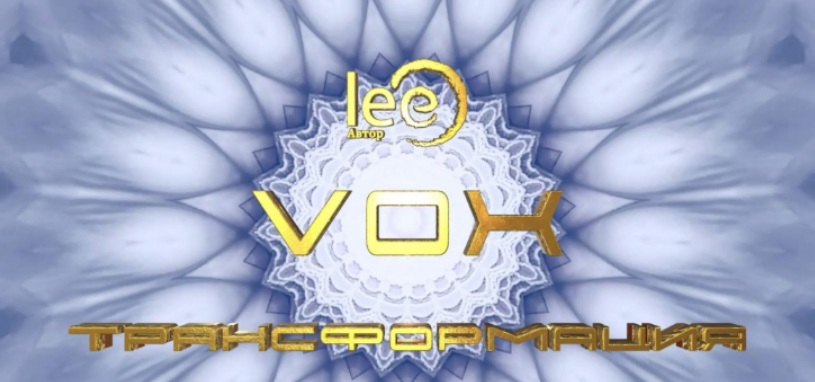
ОПИСАНИЕ:
VOX | Трансформация [Lee]
Дата проведения 29 июня 18.00 Стамбул 2024 года
Смена правил Игры уже происходит. Меняются энергии и следовательно подходы к управлению этим процессом.
Раньше нам нужно было годами тренировать навыки, чтобы создавать локальные сдвиги, а сегодня нам сразу доступны возможности радикальных перемен. Большие сдвиги следуют за большей ответственностью.
Вебинар о том, как и для чего происходит эволюция из 3Д в 5Д, что конкретно меняется и, как разобраться в новых энергиях.
Вам доступно созидание без боли, но для этого необходимо осознать другие мотивирующие энергии.
Не от «плохо к хорошо», а по принципу...
Личностный рост [Ольга Демчук] Управление эмоциями (2024)
- Пользователь tttx
- Дата Саморазвитие / Психология / Эзотерика

ОПИСАНИЕ:
Управление эмоциями [Ольга Демчук]
На вебинаре будет два основных направления в работе с эмоциями:
1. Снижение интенсивности эмоций
Чем небезопаснее человеку кажется мир и люди, тем больше у него страха, страданий и злости. Какую именно картину мира мы транслируем себе? Насколько она соответствует реальности? Можем ли мы влиять на наше восприятия?
2. Управление через присвоение
Проецируя причину своих эмоций вовне, мы перестаем быть их собственниками, а значит, утрачиваем возможность управлять ими. Признать собственные эмоции нам мешает аутоагрессия и узость мировоззрения. Можем ли мы стать более честными с собой и толерантными...
Личностный рост [Николай Ягодкин, Максим Гущин] Осмысленное cкорочтение (2024)
- Пользователь tttx
- Дата Саморазвитие / Психология / Эзотерика

ОПИСАНИЕ:
Осмысленное cкорочтение [Николай Ягодкин, Максим Гущин]
После прохождения курса вы сможете:
- Быстрее достигать поставленных целей
Быть на гребне информационной волны, применяя техники скорочтения. Вы кратно быстрее освоите всю необходимую вам для карьерного, профессионального и личностного роста литературу - Эффективно использовать своё время
Благодаря навыкам эффективного скорочтения вы высвободите десятки часов на то, что вам дорого и важно - Улучшить память, осознанность и продуктивность
Благодаря навыкам быстрого чтения без утраты понимания, вы сможете наконец-то прочесть все те груды интересных вам книг, которые давно...
Личностный рост [Ксения Меньшикова] Магия в вопросах и ответах. Встреча 52 (2024)
- Пользователь tttx
- Дата Саморазвитие / Психология / Эзотерика

ОПИСАНИЕ:
Магия в вопросах и ответах. Встреча 52 [Ксения Меньшикова]
Очередная встреча Меньшиковой со своими учениками и вольными слушателями школы, которая состоялась в мае 2024 года.
В ходе этой встречи обсуждались вопросы:
- Можно ли снять Христа с креста?
- Что такое "откровение"?
- Свободны ли люди сейчас от проведённого обряда крещения?
- В каком роду находится женщина и ее ребенок если развода не было?
- Беда со всеми мужчинами в роду у ведьмы
- Можно ли скорректировать судьбу с помощью карт Таро?
- Зачатие в парад планет
- О выживании и "выживальщиках"
- О работе "эгрегора карт Таро"
- Расплата за долги
- Есть ли...
Личностный рост [Григорий Зайцев] [Касталия] Футарк. Практические занятия. Лекция 9 (2024)
- Пользователь tttx
- Дата Саморазвитие / Психология / Эзотерика

ОПИСАНИЕ:
Интеллектуальный клуб «Касталия»
Юнгианство. Оккультизм. Трансгрессия
"Касталия" - многомерный культурно-просветительский проект, целью которого является ментальное и духовное обогащение личности посредством синтеза самого широкого спектра знаний - от глубинной психологии до оккультных традиций - и от того не имеющий аналогов в информационном пространстве.
Закончился большой курс по Старшему Футарку и пришло время практических занятий.
Первое занятие состоится 5 апреля в 19.00
Ведущий: Григорий Зайцев
Маг, композитор, культуролог, кандидат искусствоведения, член Правления Союза московских композиторов.
Участник множества...
Ораторское искусство [Александр Герасимов, Антон Махновский] Боевые фокусы языка (2024)
- Пользователь tttx
- Дата Ораторское искусство

ОПИСАНИЕ:
Боевые фокусы языка [Александр Герасимов, Антон Махновский]
Мастер-класс проводят Александр Герасимов и Антон Махновский.
Программы нет.
Дата проведения: 22 июня 20:00 мск.
ПРОДАЖНИК:
СКАЧАТЬ:
Личностный рост [Владимир Макулов] Адронный коллайдер 2.0 (2024)
- Пользователь tttx
- Дата Саморазвитие / Психология / Эзотерика
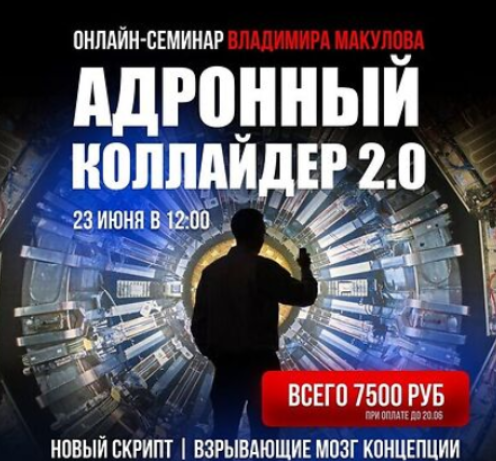
ОПИСАНИЕ:
Адронный коллайдер 2.0 [Владимир Макулов]
Адронный коллайдер 2.0 - это ещё более простая и понятная для применения методика, которая делает главное - меняет представление Клиентов о самих себе.
После чего их психика перестаёт распознавать как угрозу то, что когда-то казалось им невероятно обидным, стыдным, страшным и плохим.
То, что когда-то они считали психотравмами - становится просто опытом в их памяти.
Также данный навык можно освоить самостоятельно и потом поменять в реальной жизни при столкновении с любым стрессом.
Программа:
Теория
- Какие существуют виды угроз для психики
- Переживание проблемы и переживание о...
Самореализация [Алексей Арестович] Курс чтения книг Герберта Уэллса. Занятие 7. Киносеминар "День гнева" (2024)
- Пользователь tttx
- Дата Самореализация

ОПИСАНИЕ:
Книга 4. Остров доктора Моро. Киносеминар 'День гнева'. Занятие 7.
Это пронзительный роман, который вскрывает почти все возможные проблемы и противоречия фантастики 20-го века и выступает как мощное предупреждение Уэллса, которое заставляет нас задуматься: сколько в нас человеческого и сколько звериного? И не бывает ли наше человеческое порой хуже звериного?
В наших литературных разборах вы научитесь смотреть сквозь призму времени, разгадывая тайны прошлого и понимая суть настоящего.
Нет лучшего способа понять мир, чем через глубокий литературный анализ в компании единомышленников.
Новый горизонт развития мышления: «Курс...
Ораторское искусство [Андрей Ланд] 13 принципов магии ораторского мастерства (2024)
- Пользователь tttx
- Дата Ораторское искусство

ОПИСАНИЕ:
13 принципов магии ораторского мастерства [Андрей Ланд]
В чем отличие этого мастер-класса ораторского мастерства от сотен других по искусству публичных выступлений
В принципиальном подходе. Меня интересует в чем природа артистического (ораторского) магнетизма.
Опытным путем я обнаружил, что дело точно не в зычности голоса, поставленных жестах, грамотно написанных текстах и т.п. Есть что-то еще. Есть нечто, что заставляет вас, как завороженных, смотреть и слушать вот этого конкретного человека, а его коллега, при этом, обладающий полным набором навыков и атрибутов, оставляет вас тотально равнодушными.
Вас будут убеждать, что именно...
Астрология [Ирина Шульгина] Открытая астрология. Провальные астро - консультации. Как избежать? (2024)
- Пользователь tttx
- Дата Астрология

ОПИСАНИЕ:
Классическая астрология
Что снится в кошмарных снах начинающему астрологу?
Правильно - провал на консультации!
И недовольное/ злое/ разочарованное лицо клиента.
Да и бывалые специалисты не застрахованы от таких тревог под кодовым названием – «А клиент не доволен!»
Хотите узнать
- В каких случаях возможны подобные казусы, когда всё на консультации идёт не так?
- есть ли факторы, предопределяющие неудачу астролога?
- и главное - можно ли быть застрахованным от профессионального провала?
Тогда приходите на вебинар!
Мы подробно поговорим об этой щекотливой теме.
Ведущая – астролог Ирина Шульгина – расскажет слушателям...
Зеркала проекта
Зеркала PirateHUB на случай блокировки основного адреса. Эти ссылки безопасны для использования. Также всегда актуальная ссылка доступна на этом сайте.
Рабочее s1 piratehubРабочее s2 piratehub
Рабочее s3 piratehub
Рабочее s4 piratehub
Недоступно в РФ openssource
Пользователи онлайн
- doks24
- PANHEAP
- tolli68
- delahoe
- nsrwntjo
- gunel8877
- rippptop
- Левва
- vscale
- Ego8466
- Zahar04
- mark_content
- Vik007
- Kensy
- Monopoli
- rutop
- scampa
- OldElf09
- shirakawa
- МишкаМи
- ruppert
- good luck
- Симфония
- neon7373
- СветланаLev
- Tichon
- Норман
- Valenta-24
- lildemid
- promoperm
- Levych
- egor621
- gserik
- TALARA
- mib2008
- Andrei_Titan2
- seri222
- maro1
- iRUSIK
- daisy2301
- Master007
- wrongway6161
- Владимирс111
- ivan7
- phj
- mir7
- Anton23232
- rytupo
- darkorgo
- Mr Voice
Всего: 2,034 (пользователей: 76, гостей: 1,958)
Отзывы о курсах
-
-
KettirinkaКурс называется "Растим гения", а в начале обучения автор говорит, что взяла эту информацию из центра, где работают со сложными детьми (с отставание в развитии). Где в её курсе система - мне не очень понятно. Автор записала видео со своей дочкой, которая манерничает перед камерой, а мама на кадром умиляется. Описания упражнений не даны, а из видео с ребёнком не всегда понятны. Качество видео хорошее, есть даже какие-то раздаточные материалы. Ну, какие-то идеи можно из видео почерпнуть, если человек давно в теме. Но есть и откровенные ошибки. Поэтому курс в целом не рекомендую.
-
О нас
PirateHUB (ex. openssource) - это сообщество, объединяющее единомышленников, стремящихся к повышению своих профессиональных навыков и освоению новых областей. На нашем сайте вы можете бесплатно скачать самые актуальные и популярные курсы, книги, тренинги и вебинары, а также материалы по различным направлениям.
Пользователи онлайн
- doks24
- PANHEAP
- tolli68
- delahoe
- nsrwntjo
- gunel8877
- rippptop
- Левва
- vscale
- Ego8466
- Zahar04
- mark_content
- Vik007
- Kensy
- Monopoli
- rutop
- scampa
- OldElf09
- shirakawa
- МишкаМи
- ruppert
- good luck
- Симфония
- neon7373
- СветланаLev
- Tichon
- Норман
- Valenta-24
- lildemid
- promoperm
- Levych
- egor621
- gserik
- TALARA
- mib2008
- Andrei_Titan2
- seri222
- maro1
- iRUSIK
- daisy2301
- Master007
- wrongway6161
- Владимирс111
- ivan7
- phj
- mir7
- Anton23232
- rytupo
- darkorgo
- Mr Voice
Всего: 2,034 (пользователей: 76, гостей: 1,958)

